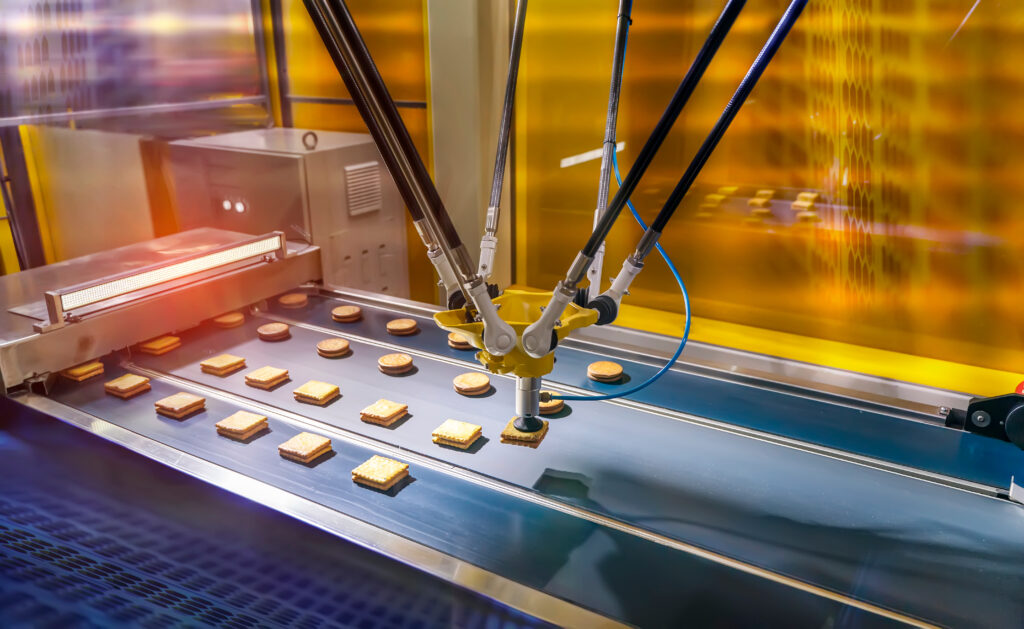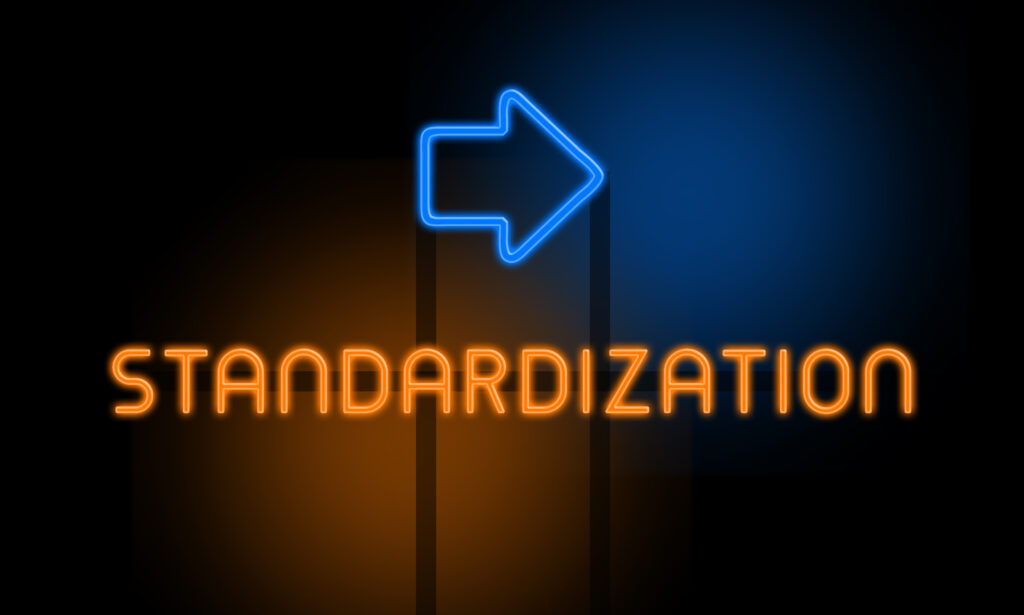
Standardization in automation: efforts and benefits
Within the automation industry, standardization can sometimes feel like an inevitable undertaking whether you are a food and beverage plant operator, a software developer, or an equipment manufacturer.
April 25, 2023 | By Marcus Mielke
 Photo: © xiaoliangge / Adobe Stock
Photo: © xiaoliangge / Adobe Stock 
Photo: © xiaoliangge / Adobe Stock
Simply, standardization is the pursuit of creating and implementing technical standards based on the consensus of different groups. Within automation, we can look at this in terms of specifications for processes, systems, and products. The different groups with stakes in the industry can be generally narrowed down to plant operators and equipment manufacturers, and these are the two perspectives which benefit in different ways from standardization efforts.
The end user, or F&B plant operator, benefits from a common approach within a given facility. Everyone is on the same page, all their technology integrates seamlessly and reports automatically, and all their staff teams enjoy a consistent manufacturing process, which simplifies training and maintenance.
OEMs, on the other hand, enjoy the ability to standardize the design of their equipment and processes, which enables a greater level of consistency in terms of what they offer to customers, and greatly simplifies their design and engineering process, and streamlines the responsibilities of their in-house service team. Ultimately, all organizations will discuss standardization, at some point, for some reason or another, but either the end user or the OEM will prevail when it comes to designing standardized systems and processes. Either OEMs solely manufacture equipment that suits their standards, or end users only purchase things that fit their own standardized approach. Which side wins out will be based on the experience of the end user, and their relationship with manufacturers.
The automation industry itself is marked by rapid change, with constant advancements and optimizations being pushed by new technologies and ideas. Standardization works to ensure that these rapid changes are integrated into existing facilities and systems, providing the maximum benefit possible to both users and manufacturers. Looking at how standardization improves the quality of a facility’s output, bolsters interoperability, increases efficiency, and ultimately saves cost.
Improved quality
The first benefit is an improvement in terms of the quality and consistency of a F&B plant’s output. With a strictly laid out and defined set of standards, processes are carried out the same way each time, so the output will be the same each time. Clearly defined quality standards, in combination with well thought-out process standard, enable a higher level of quality and consistency, which benefits a manufacturer and their customers.
Manufacturers can be confident, even if they were to expand their facility or open a new plant, their products will meet quality control standards and be made with the same consistency and quality. Customers can be assured that they are buying products with integrity, that meet their expectations in every aspect. In turn, this improves the reputation of that manufacturer within the industry.
Enhanced Interoperability
Standardization contributes to increased interoperability between equipment and systems, as sticking to a set of standards when it comes to software and controls, enables seamless cooperation between equipment within a plant’s manufacturing line. By having equipment and systems designed to fit a specific set of standards, integration is greatly streamlined, and communication between those systems is improved.
Data exchange and reporting are also made much easier by a standardized system working in harmony. Reports can be generated through a single piece of software, which aligns with all the equipment in each production line, instead of multiple data reports being pulled from each individual machine and manually compiled and analyzed. Standardization enables greater visibility for plant operators, who can more easily visualize and compare data across several production lines or several facilities. All aspects of a facility can be monitored and contrasted to assess performance and identify issues if a technical standard has been established which enables monitoring software to handle everything at once.
Increased efficiency
Above all, standardization cuts down on complexity. Although standardization can be complicated and time-consuming, they are worth the investment thanks to the many ways they simplify operations and procedures for plant managers.
Typically, end users may have been buying machinery or process components from OEMs that get the job done at the time of purchase. However, over time, this can cause issues when a production facility grows larger and inevitably becomes more complex. In turn, the amalgamation of interconnected parts is likely to be the victim of several competing standards working together. Different OEMs could use different control platforms or components for their offerings, potentially interfering with integration efforts within a facility. If two control platforms are present, but not expressly compatible, or reporting software can only integrate with half of a plant’s equipment, problems begin to materialize as time goes on.
To achieve maximum efficiency, plant operators must keep the equipment running. OEMs will provide a list of recommended spare parts to their customers and will advise them to have these parts on hand at any given time to expedite repairs and replacement processes. With different OEMs and different standards present in one facility, the list of spare parts can grow exponentially and become complicated and expensive as plant operators work to stock spare parts from different suppliers in different countries, with different standards.

Photo: © Hepta / Adobe Stock
Cost savings
Improving the consistency of a plant’s output, increasing potential for interoperability, and boosting efficiency will all contribute to cost savings. For any plant operator, having a facility where different platforms and systems are at play which lack technical standardization will lead to increased overhead costs, specifically when it comes to training.
Operations and maintenance staff must be cross trained for different aspects of a production facility, and while operator training is one thing, it is really maintenance training that can balloon budgets, with individuals requiring intricate knowledge of multiple systems and equipment types to effectively service facilities. The more systems and different platforms within a facility, the more maintenance staff, new and old, need to learn to be effective.
Examples of standardization
The question of how facilities can be standardized may remain, and the answer is variable based on the level of commitment possessed by the F&B plant operator. It could be as simple as all the hardware contained in a main control panel having standard components and a standard layout. Meaning operators can work with the control panel in different contexts and be instantly familiar, and maintenance staff can apply their training to all the main control panels across multiple facilities.
Some more complex standardization efforts could come in the form of standardized data formats, which simplify the exchange of data between different systems, and enable reports to be generated across entire production lines without the need for manual collection, contextualization, and reconciliation of data.
Challenges
Although standardization is a beneficial undertaking for users and OEMs alike, there are several limiting factors when it comes to its adoption. These are challenges which exist across various industries and will likely be eased by the passage of time and standardization efforts becoming increasingly common within automation.
The largest challenge to standardization is an industry that is often resistant to change. There exists a reluctance to adopting new technologies, due to factors such as cost, time-to-implement, and unknown risks of moving to new technology. Plant operators may also fear the disruption they perceive will affect their facilities during the standardization process. Moving from old systems to new, standardized systems is complicated and does take time, so there are concerns over lowered productivity during the transitional phase.
Although standardization works to lessen variance across systems and processes, it is often the case that each user or OEM will adhere to their own standard, which can make universal standards across the industry difficult. Even between different regions of the world, there could be different, competing standards which complicate standardization efforts of individual companies.
In the pursuit of consistent technical standards, existing systems and processes may need to be upgraded, which can be a challenge for companies working with older systems and processes. There could be multiple barriers facing companies with older hardware, with upgrades being prohibited by budgets or time.
Future of standardization
Into the future, standardization will become more common, and more necessary to optimize plant operations. It enables companies to more easily expand existing facilities, or create new ones, as their standardized methods can be easily applied to new spaces. Within the automation space, it is likely that software reporting platforms will become increasingly agnostic, rendering them as more flexible solutions that can fit into a wider array of technical standards. This flexibility will likely become a main selling point, as companies create their own internal standards and need a software that can easily integrate into their operations.
___________________
Marcus Mielke is the perimeter director at Actemium Canada. His 30 years of experience within the automation industry is marked by his commitment to the success of his customers and the accomplishments of his team.
